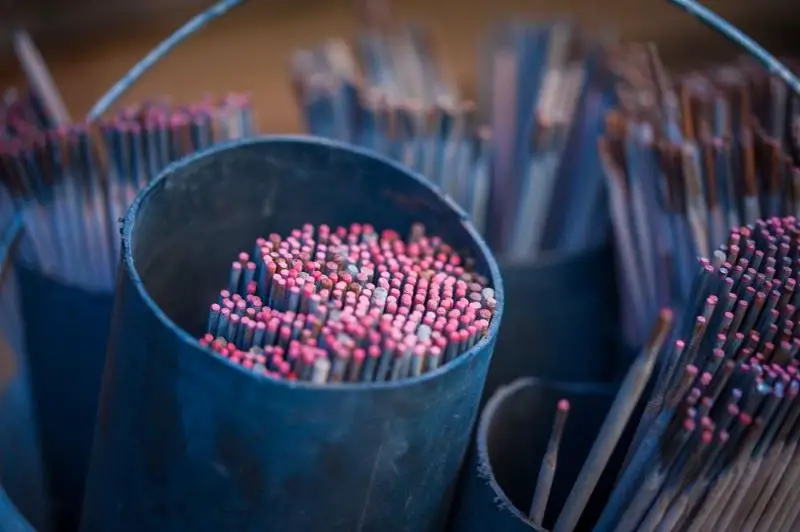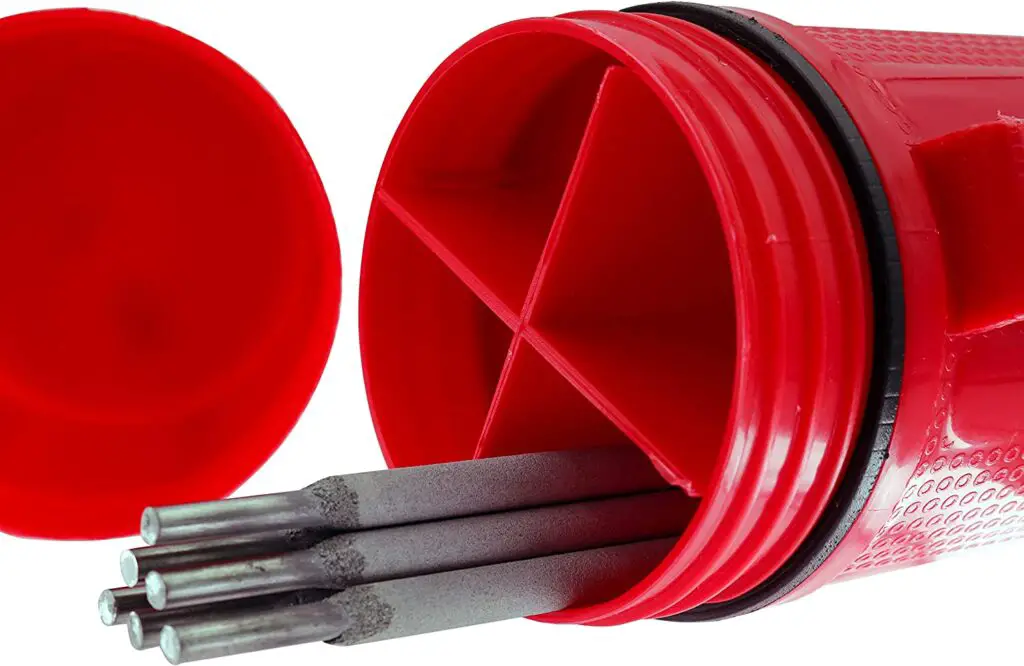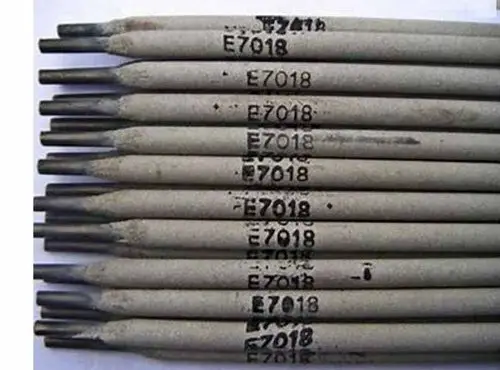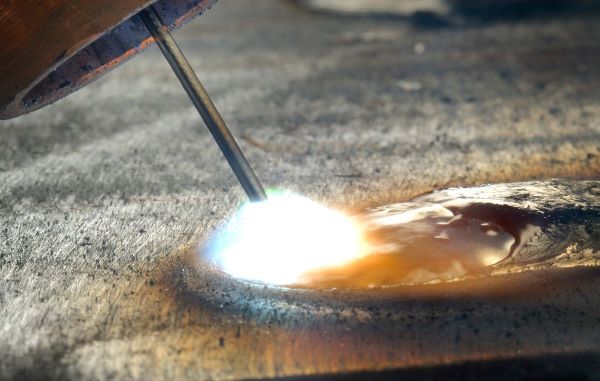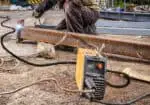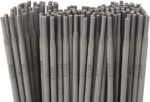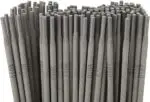One cannot do welding work without the proper equipment. A welding rod or electrode is one such tool that plays a major role in welding work for several projects.
You will need a rod that is reliable, and functional for the welding to be effective and efficient. However, there is always a chance of such tools expiring eventually which will lead to poor welds.
So, the question here is do welding rods expire too? The answer is YES! Welding rods like any other equipment have an expiration date.
Many different electrodes are used for several welding techniques and each of these electrodes has unique features. Therefore, not all of them have the same shelf life. Some last longer than others.
In this article, I have taken a deep dive into the expiration of electrodes and explained how the whole process works.
Causes of Welding Rods Expire
Different welding rods expire due to different reasons, but here are the most common factors that cause them to expire – moisture and humidity, temperature, and age.
Let me explain how each of them causes welding rods to expire and what you should do to try and avoid it from happening.
1. The humidity and moisture
Once you open welding rods from their sealed packaging, you need to keep them in a secure container that is in a dry location when not in use. The idea is to shield it from moisture and humidity and keep it extremely dry for maximum use.
If the welding rod gets exposed to humidity, it will soak up moisture, which will cause it to become moist and also lead to disintegration as the coating on the rod breaks down.
However, this is not the case with every type of electrode, it applies mainly to low-hydrogen electrodes as they are most sensitive to humidity and moisture.
The maximum moisture content on low-hydrogen electrodes is 0.5%. Anything above is going to ruin them resulting in poor welds.
2. The temperature
The welding rods or electrodes must be stored in high temperatures, as they need to remain dry to perform effectively. You can even reuse the electrodes once the packaging is removed, provided they are kept in warm temperatures.
The best place to store electrodes is in a rod oven or cabinet in which the temperature usually remains above 100 degrees Fahrenheit. The temperature can be increased in these ovens to re-dry the electrodes in case they get wet somehow.
3. Age of the welding rod
The age of the electrode plays a role too in causing it to expire over time. The older they get the more they start to deteriorate or fall apart. With time they may even be more at risk of getting affected by moisture or the cold.
There are ways to bring a welding rod back to life once it goes bad in certain cases. Like, if the issue is only that of moisture entering the rod, then baking the rod in a welding rod oven could work to rehabilitate it back to a functional stage.
However, in the case where the welding rod’s flux has softened or there is a visible powdery remnant, then it is safe to say that it is not salvageable anymore and should be immediately thrown away.
The Expiration Of Different Types Of Welding Rods
In this section of the article, I am going to explain in depth how different types of welding rods have different expiration dates and reasons for expiring.
There are various types of electrodes or welding rods with varying characteristics of their own. Ideally, they should last for over 3 years if they are kept in a secure state.
The manufacturer and material used to make an electrode can determine its shelf life, however, it is best to switch to new ones after being used for 5 years.
There are consumable electrodes, which can melt the rods when the welding process takes place, and they act as fillers during the process.
These types of electrodes are the ones that generally get affected by the environment which leads to their expiration. They come in various types with their own set of characteristics.
The Stick welding process uses consumable electrodes. Now, let’s take a look at some of the most common types of consumable welding rods and their shelf life:
1. Low hydrogen electrodes
During the welding process there can be cracking due to the presence of hydrogen, this can be prevented by using low hydrogen electrodes.
EXX15, EXX16, and EXX18 are the codes used for such electrodes. Among all the electrodes, one of the most popular ones is the E7018 which is very prone to get ruined by moisture.
When exposed to a moist or damp environment the E7018 electrode can die within six months. However, if it is kept securely in an airtight container, it can survive up to five years or more.
2. Metal-cored electrodes
These types of electrodes do not get damaged by the moisture in the air as much as low hydrogen electrodes.
However, it is best advised to keep these electrodes stored in properly sealed containers to avoid any kind of deterioration caused by outside conditions.
When they are kept sealed, their shelf life is 5 years and when kept in other containers the shelf life is one year.
3. Flux-core electrodes
This electrode is a composite tubular filler metal that has an outer layer or case made of metal, while the core is made of numerous powdered materials.
These electrodes also have a shelf life of up to 5 years when kept in a sealed container. However, the shelf life is 2 years when stored in dry and warm conditions in other places.
Below I have mentioned a few popular electrodes that are used commonly today
E7018 – This low-hydrogen electrode has the shortest shelf life due to its extreme sensitivity towards moisture and humidity but is one of the most commonly used electrodes (mainly for carbon steel).
E6010 – This electrode is mainly used for stick welding. It is popularly used for welding pipes and a wide variety of other welding work.
E6011 – This electrode shares similar characteristics to that of the E6010.
E6013 – This electrode is popularly used for tough welding surfaces and to achieve clean finishes. It is suitable for beginners in welding as well.
Whereas, non-consumable electrodes act differently. Such electrodes become electrical conductors during the welding process to sculpt two pieces of metal together or you will need a separate filler altogether, as they do not melt.
Non-consumable electrodes do not get affected by the environment or outside conditions, because they do not have any coating or material to do so. Therefore, they do not have any shelf life.
Generally, these types of electrodes will be simply replaced once they are completely burnt down as they start to erode during the entire welding process. The TIG welding process uses such non-consumable electrodes.
Is There A Way To Avoid The Welding Rods From Going Bad?
Yes, there are a few things that you can do to avoid your welding rods from going bad or at least increase their shelf life.
To maintain the bonding strength of the electrodes and extend their shelf life, you will need to make sure they are kept in a warm, dry place at all times.
First and foremost, you should only take out the rods that you will be needing when you open the sealed can. Keep the remaining rods in the package itself while making sure it is sealed instantly.
Post opening the package initially, the electrodes that are not being used need to be kept in a rod oven, a vacuum can which hasn’t been opened yet, or any other sealed container will do too.
Pointers for low hydrogen electrodes
1. Low hydrogen electrodes should be bought in sealed containers that are entirely airtight to protect against moisture.
2. The container should not be opened unless an electrode needs to be used.
3. The unused electrodes should be placed in a cabinet heated at 250 to 300°F, once the container is opened.
4. Different electrodes have different exposure lengths. The E7018 electrode will get damaged when exposed to air for more than four hours.
Pointers for non-low hydrogen electrodes
1. Once you open the airtight sealed container of non-low hydrogen electrodes, you need to keep them inside heated cabinets at a temperature of 100 to 200°F.
2. Make sure that you are not storing them in cabinets at temperatures higher than the temperature mentioned in the first point.
What Is The Best Way To Store Electrodes?
By now you know that welding rods or electrodes are very crucial for any welding work. Therefore, you must keep them safely and securely. Take a look at the below-mentioned points that will come in handy when you have to store the electrodes properly.
1. Before using a rod box to get a new electrode out of it, after you have opened it recently, it should be cleaned to avoid getting dust and rust inside the box, which can in turn damage the new rods.
2. Welding rods should be stored in areas where there is no direct sunlight and water leakage. This will help ensure they do not get damaged by outside elements.
3. To prevent the rods from losing their shape over time, the lids should be facing up when stored after you have opened the box already.
4. Keep checking the welding rods every two weeks to ensure no rust or dirt has accumulated in the closed box. It is best advised to throw them away if you notice that they have been halfway rusted already.
5. You should clean the rods in case you notice that they are blocked with dirt and then keep them in a different container.
6. Welding rods can be stored for up to two years if they have not been exposed to direct sunlight, or haven’t been damaged from any dirt or rust.
See also: What are the Most Common Stick Electrodes?
Can You Do Anything With Electrodes That Have Gone Bad?
Yes, you most certainly can revive electrodes that have gone bad due to moisture. Welding rods or electrodes that have been damaged by moisture can be re-dried to their original capacity to perform.
However, not all types of electrodes can be re-dried at the same temperature and time. It will vary depending on their current condition at that time.
The temperatures in which you would ideally store the electrodes to avoid moisture from entering the box are lower than the temperatures required to re-dry the electrodes.
Manufacturer’s normally mentioned the necessary specifications for both storing and re-drying, so you should refer to them.
To make sure that every damaged rod attains the right temperature for drying, you are required to spread them out in the oven after removing them from their box.
This applies to all types of electrodes in whatever condition they are in because failing to do so will not allow them to be re-dried effectively and uniformly.
Also, to minimize the possibility of alloys being oxidized or cracks on the coating, the rods should be dried in a sealed container for around one or two hours before re-drying them in the heat.
Re-drying of low hydrogen electrodes
1. If the coating of low hydrogen electrodes starts to flake, break off, and become brittle during welding due to extreme drying, then they should be discarded.
2. Similarly, you should discard the electrodes if they do not perform in the same original capacity during welding.
3. The electrode should be re-dried in a heated cabinet at a temperature of 250-300°F for about an hour.
4. Avoid drying them at temperatures higher than the said requirement as doing so may ruin the electrodes further.
The coating of the electrodes and moisture bond together chemically, which is what has to be broken at the correct temperature for the right amount of time. Otherwise, the electrodes will deteriorate.
5. Drying them at lower temperatures for several hours is not the same thing as drying them for one hour at the required temperatures.
6. Put the electrodes individually in the oven and not the entire can of electrodes. Doing so will burn the cardboard liners of the can plus there will not be an equal distribution of heat between the electrodes.
The accurate temperatures for different electrodes are as follows;
– There is no need for pre-drying electrodes that have not come in contact with water directly and were exposed to air for less than a week.
– The type of electrode determines the final re-drying temperature.
– E7018 and E7028 electrodes should be dried at temperatures ranging from 650 to 750°F.
– E8018, E9018, E10018, and E11018 electrodes should be dried at temperatures ranging from 700 to 800°F.
Re-drying of non-low hydrogen electrodes
1. The electrodes must be stored in heated cabinets at temperatures of 100 to 200°F once the container is opened.
2. The can of electrodes should not be put in the oven.
3. The electrodes should not be kept at higher temperatures, mainly the ones from the fast freeze group.
The accurate temperatures for different electrodes are as follows;
– To prevent the coating of the fast-fill category electrode from cracking, you must pre-dry them at 200 to 230°F for about 30 to 45 minutes.
– Then for another 30 to 45 minutes the electrodes should be re-dried at a final temperature of 400 to 500°F.
– The same step should be followed for the fill freeze category of electrodes to prevent the coating from cracking. However, the final re-drying temperature must be at 300 to 350°F for around 20 to 30 minutes.
– Fast freeze category of electrodes should not be re-dried.
Wrapping Up
In conclusion, you must deal with the electrode the right way and store them securely and safely away from moisture and humidity.
By being cautious you will be able to increase its shelf life and slow down its process of dying eventually even if you cannot eliminate its chances.
However, an electrode or welding rod cannot be saved when you start noticing that there is a softened flux or there is powdery residue. In such a scenario you need to let go of the electrode for good.

